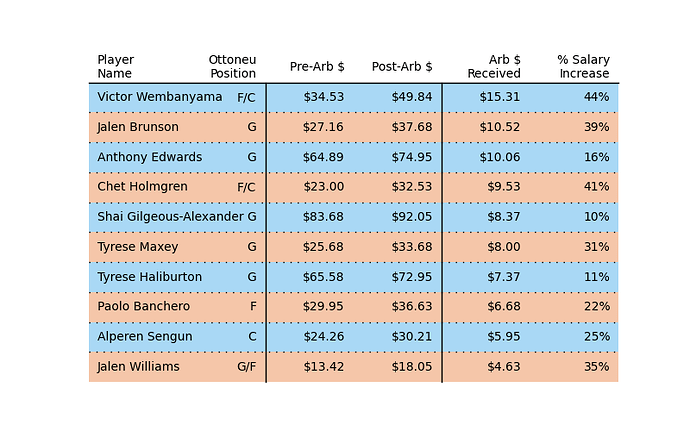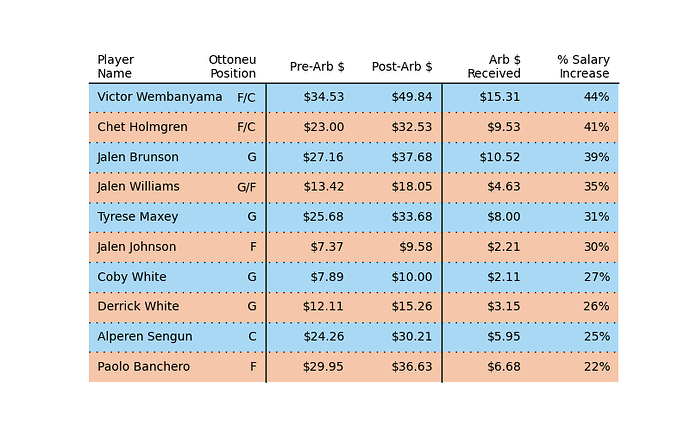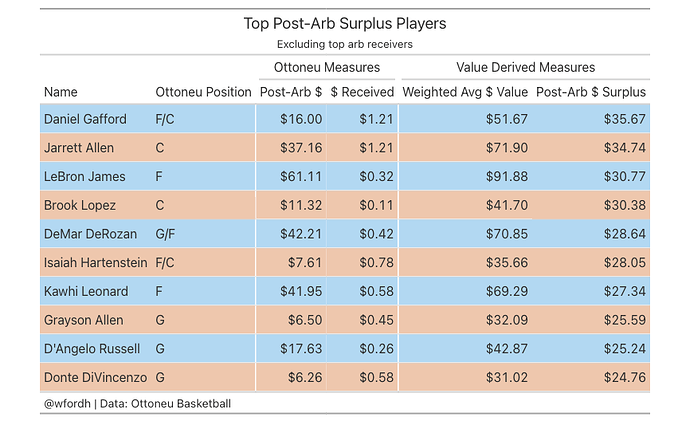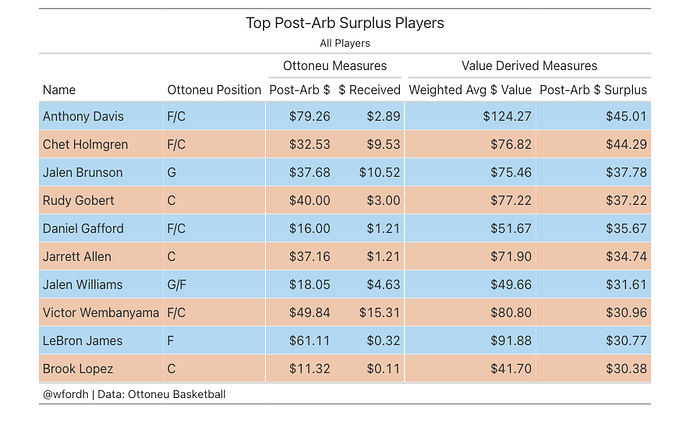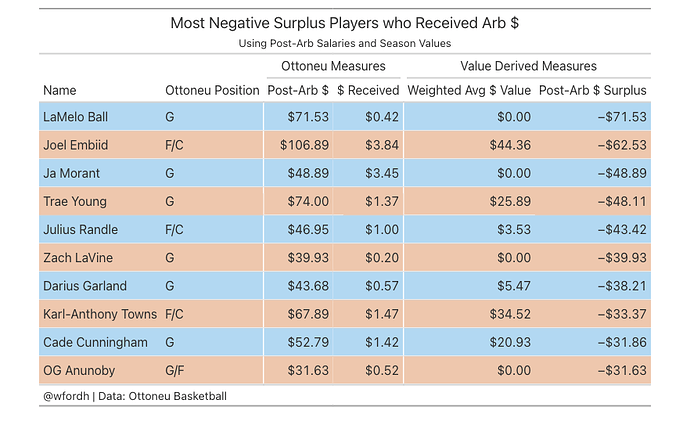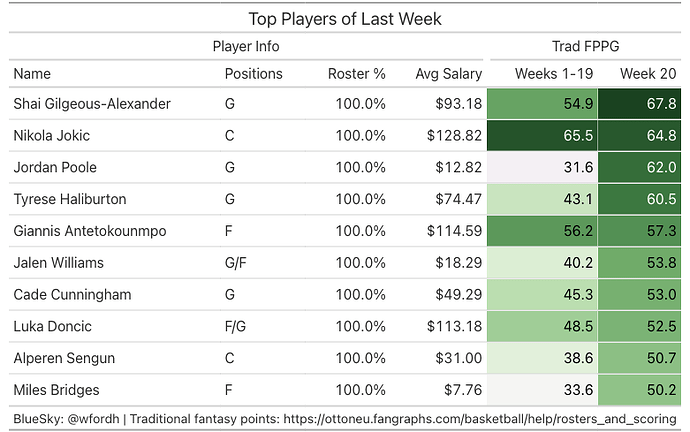Arb is done now and time to dig into how managers went about it! Just like last year, I pulled the salaries before and right after arbitration was applied so hopefully the data wasn’t impacted by any early cuts. I calculated the absolute and percentage differences for each player’s average salary from before and after arbitration. It’s still not split out by format - hopefully next year. Just a matter of writing the code to get league data, basically.
On to the charts! I’ll keep the commentary to a minimum here as I trust y’all paid attention to the NBA this year, can read the tables, and there are follow-up analyses I want to get done, too.
Top Player Increases by Salary
Would you believe, it’s Wemby! He received an astounding $15.31 on average in arbitration to raise his post-arb average salary to $49.84. In other words, he got hit with In other other words, he’s likely to still be an incredible steal next year and could repeat this sort of increase again. I would be very interested to learn if anyone has lead Ottoneu in arbitration received two years in a row for baseball or football.
Incredibly, Jalen Brunson might be the closest comparison as he has come in 2nd this year and last but should still be a good value in most leagues with an average salary now at $37.68. Another wild fact is that a full SIX - Wembanyama, Brunson, Haliburton, Edwards, SGA, and Banchero - of last year’s top 10 repeated. It goes to show how valuable getting in early on players that hit can be in Ottobasket.
Brunson, Anthony Edwards, and Chet Holmgren all received more in arb this offseason than last year’s leader, Tyrese Haliburton. Chet may have received more arbitration if it weren’t for certain managers having a type - he and Wemby were amazingly on the same team in all three of my leagues.
You can also see the impact of the playoffs on arbitration, with only Wemby and Sengun not making the playoffs. I wonder if this recency bias impacts the efficiency of arbitration or if learning from deep playoff runs precedes more growth the next season.
The last thing that stands out to me is that three Oklahoma City Thunder players made it, reflecting their breakout season as a team with individual performances worthy of arbitration dollars.
Top Player Increases by Percentage of Salary
Wemby again?!? I’m sure these arbitration accolades will make it onto his Basketball-Reference page.
It’s not surprising to see the maximum values for increases as a percentage of salary are not as high as last year, particularly with so many repeat appearances in the absolute differences for this year and last since they’re starting at higher numbers. However, we do have several repeat players from this year’s absolute difference table with Wemby, Chet, Brunson, J-Dub, Maxey, Sengun, and Banchero all showing up again.
The three newcomers are Jalen Johnson, Coby White, and Derrick White. Coby was the runner-up for Most Improved Player (a lot of other players in these tables show up, too) while Johnson would have received votes had he qualified for the awards. Derrick White merely filled in all the gaps for the champion Celtics and lit nets on fire during the playoffs.
Up Next
Now that I’ve got the first step of this process a little more buttoned up, I’m going to try and push this arbitration series to two new areas: a retrospective on last year’s arb targets (which I’m realizing may be a bit boring with how many repeats there are) and players who I think should have received more arbitration. Keep an eye out for those and feel free to drop suggestions!
